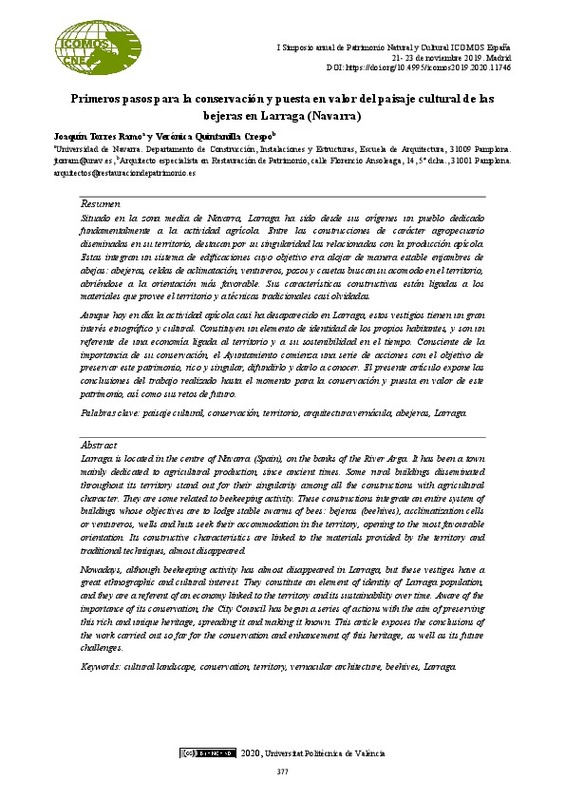JavaScript is disabled for your browser. Some features of this site may not work without it.
Buscar en RiuNet
Listar
Mi cuenta
Estadísticas
Ayuda RiuNet
Admin. UPV
Primeros pasos para la conservación y puesta en valor del Paisaje cultural de las bejeras en Larraga (Navarra)
Mostrar el registro completo del ítem
Torres Ramo, J.; Quintanilla Crespo, V. (2021). Primeros pasos para la conservación y puesta en valor del Paisaje cultural de las bejeras en Larraga (Navarra). En I Simposio anual de Patrimonio Natural y Cultural ICOMOS España. Editorial Universitat Politècnica de València. 377-386. https://doi.org/10.4995/icomos2019.2020.11746
Por favor, use este identificador para citar o enlazar este ítem: http://hdl.handle.net/10251/160467
Ficheros en el ítem
Metadatos del ítem
| Título: | Primeros pasos para la conservación y puesta en valor del Paisaje cultural de las bejeras en Larraga (Navarra) | |
| Autor: | Quintanilla Crespo, Verónica | |
| Fecha difusión: |
|
|
| Resumen: |
[EN] Larraga is located in the centre of Navarra (Spain), on the banks of the River Arga. It has been a town
mainly dedicated to agricultural production, since ancient times. Some rural buildings disseminated
throughout ...[+]
[ES] Situado en la zona media de Navarra, el municipio de Larraga ha sido desde sus orígenes un pueblo dedicado fundamentalmente a la actividad agrícola. Entre las construcciones de carácter agropecuario diseminadas a lo ...[+]
|
|
| Palabras clave: |
|
|
| Derechos de uso: | Reserva de todos los derechos | |
| ISBN: |
|
|
| Fuente: |
|
|
| DOI: |
|
|
| Editorial: |
|
|
| Versión del editor: | http://ocs.editorial.upv.es/index.php/icomos_es/icomos2019/paper/view/11746 | |
| Título del congreso: |
|
|
| Lugar del congreso: |
|
|
| Fecha congreso: |
|
|
| Tipo: |
|









